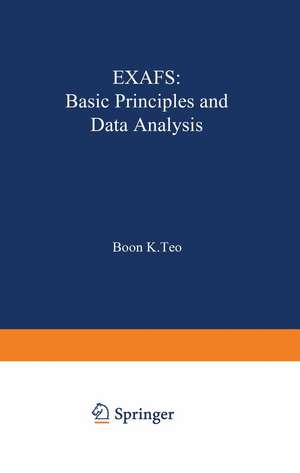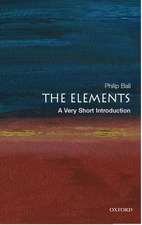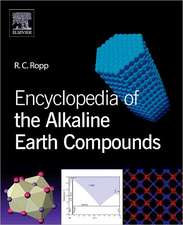EXAFS: Basic Principles and Data Analysis: Inorganic Chemistry Concepts, cartea 9
Autor Boon K. Teoen Limba Engleză Paperback – 14 apr 2014
Preț: 370.34 lei
Nou
Puncte Express: 556
Preț estimativ în valută:
70.87€ • 75.78$ • 59.09£
70.87€ • 75.78$ • 59.09£
Carte tipărită la comandă
Livrare economică 14-21 aprilie
Preluare comenzi: 021 569.72.76
Specificații
ISBN-13: 9783642500336
ISBN-10: 3642500331
Pagini: 368
Ilustrații: XVIII, 349 p.
Dimensiuni: 156 x 244 x 19 mm
Ediția:1986
Editura: Springer Berlin, Heidelberg
Colecția Springer
Seria Inorganic Chemistry Concepts
Locul publicării:Berlin, Heidelberg, Germany
ISBN-10: 3642500331
Pagini: 368
Ilustrații: XVIII, 349 p.
Dimensiuni: 156 x 244 x 19 mm
Ediția:1986
Editura: Springer Berlin, Heidelberg
Colecția Springer
Seria Inorganic Chemistry Concepts
Locul publicării:Berlin, Heidelberg, Germany
Public țintă
GraduateCuprins
1. X-Rays and Electrons.- 1.1 Introduction.- 1.2 Generation of X-Rays.- 1.3 Properties of X-Rays and Electrons.- 1.4 Electronic Structure of Atoms.- 1.5 Absorption Coefficients and Absorption Edges.- 1.6 Interactions of Photons and Electrons with Matter.- 2. Extended X-Ray Absorption Fine Structure (EXAFS) Spectroscopy.- 2.1 EXAFS Spectroscopy.- 2.2 Theory.- 2.3 Data Analysis.- 3. EXAFS Parameters.- 3.1 Variables and Functions.- 3.2 Effects of Important Parameters.- 3.3 Convention of Changing E0.- 4. Theory of EXAFS.- 4.1 Introduction.- 4.2 Derivations of EXAFS Theory.- 4.3 EXAFS of L Edges.- 4.4 The Photoelectron and the Excited Atom.- 5. Improvement of EXAFS Theory.- 5.1 Energy Threshold — The Phase Problem.- 5.2 Inelastic Scatterings — The Amplitude Problem.- 5.3 Static and Thermal Disorder Effects.- 5.4 Multiple Scattering EXAFS Formalism.- 6. Data Analysis in Practice.- 6.1 Data Reduction.- 6.2 Fourier Transform (FT).- 6.3 Fourier Filtering (FF).- 6.4 Curve Fitting (CF).- 6.5 Parameter Correlation and the FABM Method.- 6.6 The “Difference” Technique.- 6.7 The Min-Max Method.- 6.8 Decomposition into Amplitude and Phase.- 6.9 The Beat-node Method.- 6.10 The Lee and Beni Method.- 6.11 The r Space Method.- 6.12 The Phase Linearization Method.- 6.13 The Regularization Algorithm.- 6.14 Other More Specialized Methods.- 7. Theoretical Amplitude and Phase Functions.- 7.1 Introduction.- 7.2 Theoretical Methods.- 7.3 Theoretical Amplitude and Phase Functions.- 7.4 Properties of Amplitude and Phase Functions.- 7.5 Comparison of Theory and Experiment.- 8. Multiple Scattering and Bond Angle Determination.- 8.1 Scattering Amplitude and Phase.- 8.2 Multiple Scattering.- 8.3 Comparison of Theory and Experiment.- 8.4 Angle Determination.- 8.5 Conclusion.- Appendix I. ThePeriodic Table.- Appendix II. X-Ray Absorption Edges and Characteristic X-Ray Emission Lines.- Appendix III. Victoreen’s C and D Values for True Absorption.- Appendix IV. Fluorescence Yields.- Appendix V. Backscattering Amplitude, Backscattering Phase, and Central Atom Phase.





















